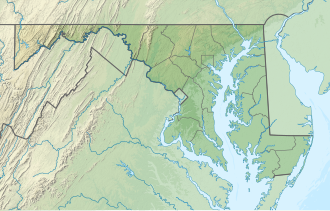| Calvert Cliffs State Park | |
|---|---|
 The park's namesake cliffs | |
| Location | Calvert County, Maryland, United States |
| Nearest city | Lusby, Maryland |
| Coordinates | 38°24′10″N76°25′19″W / 38.40278°N 76.42194°W |
| Area | 1,311 acres (531 ha) [1] |
| Elevation | 112 ft (34 m) |
| Established | 1960s |
| Administered by | Maryland Department of Natural Resources |
| Designation | Maryland state park |
| Website | Official website |
Calvert Cliffs State Park is a public recreation area in Lusby, Calvert County, Maryland, that protects a portion of the cliffs that extend for 24 miles along the eastern flank of the Calvert Peninsula on the west side of Chesapeake Bay from Chesapeake Beach southward to Drum Point. [2] [3] The state park is known for the abundance of mainly Middle Miocene sub-epoch fossils that can be found on the shoreline. [4]

